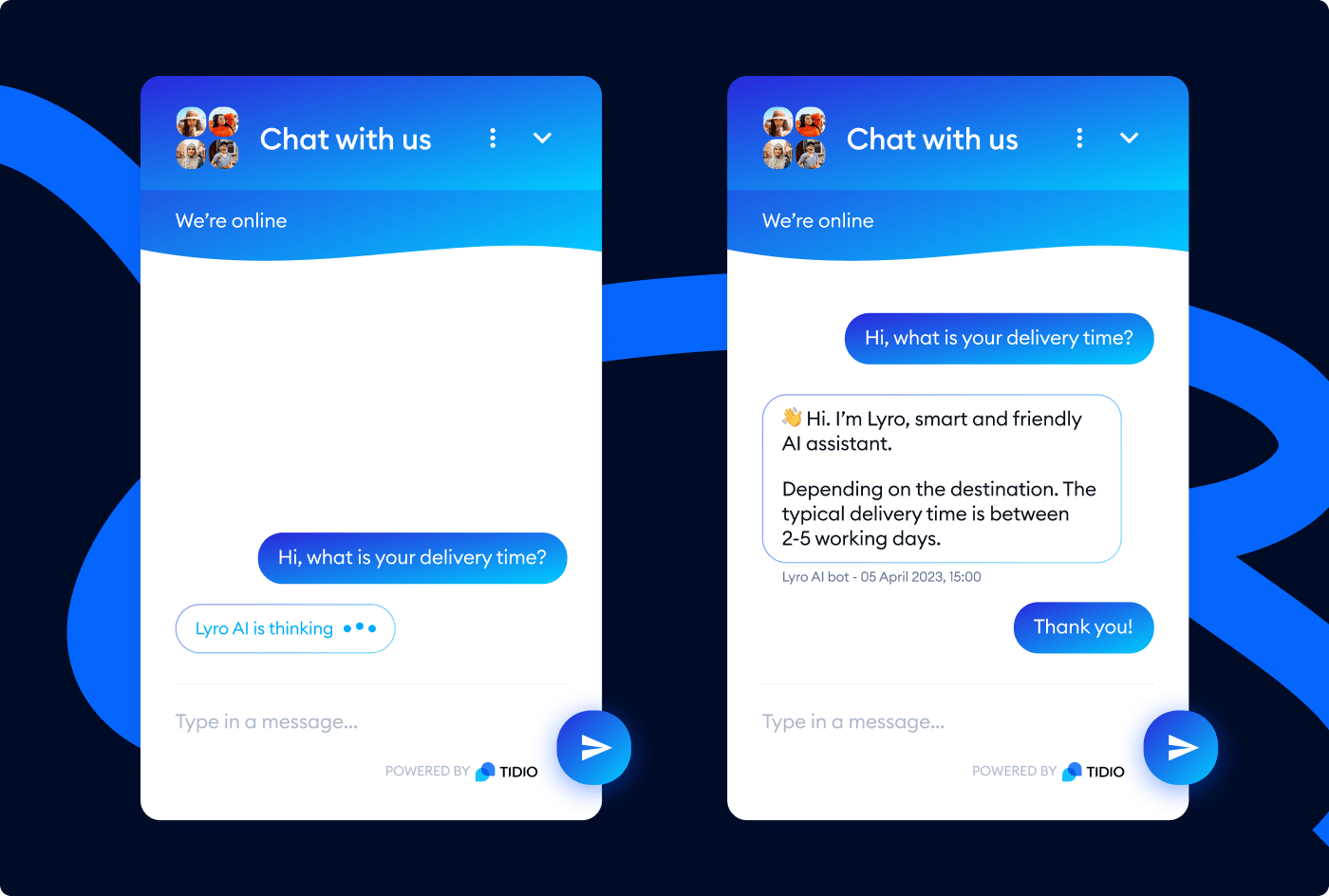
Lyro is Tidio’s AI chatbot, powered by Antrophic’s Claude LLM (large language model) and Tidio’s in-house AI mechanism, which controls what the model learns and says.
It uses deep learning techniques to understand, predict, and generate human-like content while Claude LLM ensures that the trained AI is honest, helpful, and harmless. This makes the model one of the most secure AI algorithms available on the market. Lyro also doesn’t allow for “AI hallucinations” and always keeps to the information from the company’s knowledge base.
Last year, we published a case study highlighting how our support team leveraged Lyro to enhance customer support operations prior to its launch to the public. Since then, significant developments and improvements have been made, including the adoption of the new Claude 3 version.
But first, let’s discover a bit more about Tidio.
Democratizing AI for customer service

Tidio is an all-in-one customer experience tool that helps small and medium businesses grow and automate their customer service. The software combines live chat with the power of chatbots to speed up processes and automate repetitive tasks.
Tidio’s customer experience agents aim to work effectively as a team, respond to a large volume of messages, and maintain the highest possible quality of customer support. The team also wants to demonstrate that they can generate additional revenue for the business.
So, how did our team experience the changes in the system?
How Lyro solves customer service challenges
The biggest challenge of the support team is about keeping the best possible quality while meeting the service level agreement (SLA). Moreover, as shoppers are tired of the robotic customer service, long waiting times, and constantly repeating their issues, personalization is more important than ever before. And Lyro is here to help.
But that’s not all.
Support teams don’t have the time to teach the software what exactly it needs to do. Well—they don’t have to anymore.
Lyro helps support teams save time and automate replies without the need to code a single line. You also don’t need to worry about training the system. It trains itself on your company data including question-answer pairs from the knowledge base and previous conversations.
We are positively surprised by how drastic the changes on the Claude 3 are. The most visible difference is seen primarily in complicated/long questions. Lyro is now able to cover all of the questions more precisely, often providing several possible solutions to a query (if more solutions/options are available), or offering step-by-step guidelines.

Sounds too good to be true?
Our customer service team puts it to the test daily, so let’s check out what they found.
Lyro automates responses to customer queries
The new version of Lyro achieved a success rate between 79% and 87% in comparison to the early version which only reached 50% to 70%. The variation in the new Lyro depended on the type of question asked and whether simple replies were included, along with the system responding to simple “Hello” messages.

Another great benefit of this software is that the risk of hallucination is minimal and Tidio is training it to stick to the results from the FAQs and the knowledge base. This will help businesses in the future to ensure the responses are on track.
The quality of conversations drastically improved when we moved Lyro to Claude 3. Lyro is more precise now and provides more elaborated and well-constructed replies.

It slashes first response time
After Tidio’s customer service team started using Lyro, the first response time dropped by 75% from 1 minute to less than 15 seconds. That’s a huge decrease that can improve your customer satisfaction since you’re not making your shoppers wait.
On top of that, fast replies can help you secure a sale if a visitor comes to you with a sale-related question. Being quick pays off.

Lyro has been a real game changer for us. Our first response time dropped from 1 minute, which is an industry standard, to less than 15 seconds!

It boosts satisfaction
The experience with the rule-based chatbots resembles a dial helpline where you pick 1 for topic A, 2 for topic B, etc. On the other hand, the conversational AI leads the chat in a natural language, learns from each communication with users, and remembers the context of the whole conversation.

That’s what makes Lyro so great—the way it can chat with customers as if it were human.
The previous generation of chatbots required a method of communication that is unnatural to humans. Lyro allows us to use the power of LLM.

Two approaches our team conducts and recommends for anyone using Lyro are:
- Keeping all the information in Lyro’s FAQ up-to-date, including the product and pricing changes
- Regularly analyzing Lyro’s conversations and checking the Suggestions tab to see all the questions that Lyro was unable to answer
Read more: Learn the tips and best practices for training Lyro AI.
Gain more time leveraging AI
Since implementing Lyro, support agents have more time to focus on achieving customer satisfaction and bringing more value to the clients. They can do it by removing obstacles reactively and proactively, as well as showing users the full potential of the products.
So, try it out yourself and see how Lyro can help you grow your business and achieve a frictionless customer experience.
Take Lyro for a spin using the free 50 conversations

